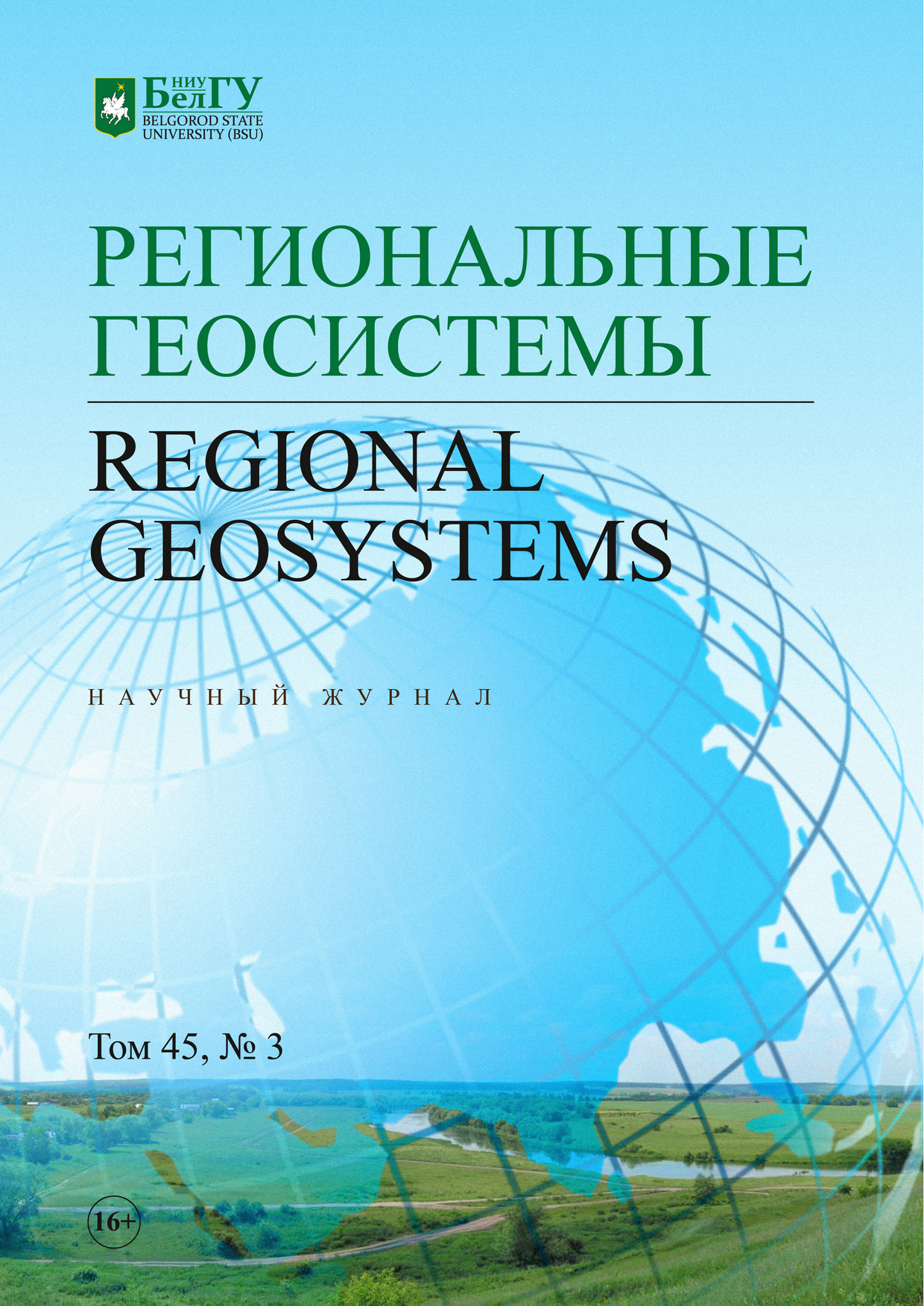Comprehensive rapid analysis of water pollution
DOI:
https://doi.org/10.52575/2712-7443-2021-45-3-382-392Keywords:
water pollution, water analysis, water pollution index, Voronezh, piezo-quartz resonators, electronic noseAbstract
The problem of analyzing waters of various genesis is due to the complexity and dynamism of their composition. The assessment of some physical, chemical and sanitary-bacteriological indicators of water quality does not give a complete picture of their real pollution and complex impact on living systems. The existing approaches to the integrated assessment of waters by biotests are characterized by high labor intensity, require specially equipped laboratories, therefore they are rarely used in practice. The aim of the work is to create an accessible method for express determination of the total water pollution index. In the course of the study, the quality of drinking and waste domestic water in the city of Voronezh was assessed, followed by the calculation of their total pollution index according to the standard methodology. An «electronic nose» type device is proposed as an alternative method for assessing the total water pollution. It is established that with the help of the device, a reliable comprehensive assessment of the contamination of samples (without decoding the chemical composition) is possible relative to the reference sample of conditionally «clean» water. The method excludes the stage of sample preparation, the duration of analysis in the field does not exceed 3 minutes. The proposed total indicator of water pollution is accurate, since it takes into account all water pollutants, as well as products of their interaction, which are not determined by laboratory methods in the prescribed manner. The correlation analysis of the values of the total indicators of water pollution according to the standard and proposed schemes showed an average closeness of the relationship (R2 = 0,85).
Downloads
References
Гагарина О.В. 2012. Оценка и нормирование качества природных вод: критерии, методы, существующие проблемы. Ижевск, Удмуртский университет, 197 с.
Коробкин А.В., Косинова И.И. 2018. Обобщение данных по техногенным гидрохимическим аномалиям на примере территории Воронежской области и г.Воронежа. ЗАО «Геолинк Консалтинг». Электронный ресурс. URL: http://www.geolink-consulting.ru/company/confer2/korobk.html (дата обращения: 2 апреля 2021).
СанПиН 2.1.3684-21. Санитарно-эпидемиологические требования к содержанию территорий городских и сельских поселений, к водным объектам, питьевой воде и питьевому водоснабжению, атмосферному воздуху, почвам, жилым помещениям, эксплуатации производственных, общественных помещений, организации и проведению санитарно-противоэпидемических (профилактических) мероприятий. Дата введения 28.01.2021 № 3.
Ушакова И.Г., Горелкина Г.А., Кадысева А.А., Широченко О.В. 2016. Физико-химический анализ воды. Омск, Омский аграрный университет, 64 с.
Бережнова Т.А., Мамчик Н.П. 2010. Оценка состояния водных объектов в местах водопользования населения г. Воронежа. Фундаментальные исследования, 9: 115–120.
Васильева М.В., Натарова А.А. 2016. Влияние сточных вод на водные объекты в Воронежской области. Наука. Мысль: электронный периодический журнал, 6 (7–1): 141–145.
Веницианов Е.В., Лепехина А.П. 2019. Актуальные проблемы водопользования в России. Водоочистка. Водоподготовка. Водоснабжение, 6 (138): 12–20.
Кочетова Ж.Ю. 2002. Определение легколетучих органических соединений в газовой фазе с применением пьезосорбционных сенсоров на основе синтетических и природных полимеров. Дис. … канд. хим. Наук. Саратов, 143 с.
Кочетова Ж.Ю., Кучменко Т.А., Коренман Я.И. 2002. Способ определения фенола в газовой смеси с нитропроизводными. Патент РФ № RU 2188417 C1. Дата публикации 27.08.2002.
Кучменко Т.А., Кочетова Ж.Ю., Силина Ю.Е. 2007. Газоанализатор с открытым входом на основе пьезосенсоров. Патент РФ № RU 2302627 C1. Дата публикации 10.07.2007.
Маханова Е.В. 2019. Диагностика экологического состояния водоема: сопоставление результатов химического анализа, биотестирования и биоиндикации. Вода и экология: проблемы и решения, 2 (78):102–110. DOI: 10.23968/2305-3488.2019.24.2.102-110.
Прожорина Т.И., Хруслова И.П. 2013. Оценка качества централизованного питьевого водоснабжения г. Воронежа. Вестник Воронежского государственного университета. Серия: География. Геоэкология, 1: 142–144.
Стрижов Н.К., Дубакова А.В., Лазарев А.А. 2020. Технологии водоподготовки на примере ООО «Краснодар водоканал»: анализ и рекомендации. Известия высших учебных заведений. Пищевая технология, 2–3 (374–375): 53–56. DOI: 10.26297/0579-3009.2020.2-3.14.
Якуцени С.П., Буровский А.М. 2015. Политическая экология. М. Берлин, Директ-Медиа, 426 с.
Cherkashin S.A., Simokon' M.V., Pryazhevskaya T.S. 2019. Analysis of the ecotoxicological conditions of Amur bay, the sea of Japan, by chemical and toxicological characteristics. Water resources, 46: 432–442. DOI: 10.1134/S0097807819030059.
Ismailov N.M., Alieva S.R. 2019. Potential role of groundwater in pollution of coastal water of the Caspian sea by organic pollutants. Arid Ecosystems, 9: 202–208. DOI: 10.1134/S2079096119030053.
Kharitonov G. 2017. Cross-border water use problems in Russia and Ukraine. Science Almanac of Black Sea Region Countries, 2 (10): 49–54. DOI: 10.23947/2414-1143-2017-10-2-49-54.
Kotchetova Z.Y., Kuchmenko T.A., Bazarsky O.V. 2017. Rapid assessment of soil pollution with kerosene using a carbon-nanotube-based piezosensor. Moscow University Chemistry Bulletin, 72: 63–68. DOI: 10.3103/S0027131417010084.
Kuchmenko T.A., Lvova L.V. 2019. A perspective on recent advances in piezoelectric chemical sensors for environmental monitoring and foodstuffs analysis. Chemosensors, 7 (3): 39. DOI: 10.3390/chemosensors7030039.
Shuba A.A., Kuchmenko T.A., Samoilova E.I., Bel'skikh N.V. 2016. Selection of a piezoelectric sensor array for detecting volatile organic substances in water. Moscow University Chemistry Bulletin, 71: 68–75. DOI: 10.3103/S0027131416010156.
Hu Y., Cheng H. 2013. Water pollution during China's industrial transition. Environmental Development, 8: 57–73. DOI:10.1016/j.envdev.2013.06.001.
Abstract views: 342
Share
Published
How to Cite
Issue
Section
Copyright (c) 2021 REGIONAL GEOSYSTEMS

This work is licensed under a Creative Commons Attribution 4.0 International License.


